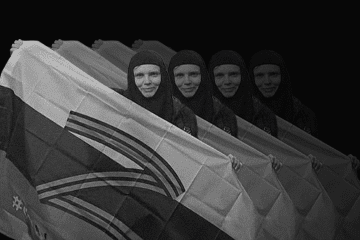- Category
- Anti-Fake
A Long History of How Russia Systematically Violates "Peace Agreements"

Historical context reveals Russia's negotiations often serve as a disguise for further aggression, undermining just peace efforts crucial for Ukraine.
Today, Russia once again emphasizes its alleged readiness for negotiations with Ukraine. However, the terms proposed by Russia contradict the principles of a just peace. They also do not account for the punishment of war criminals and aim to seize even more Ukrainian territory.
Typically, such proposals from Russia are intended only to buy time in order to prepare their next invasion. The history of relations between Russia and Ukraine includes numerous attempts to secure "peace," with just as many failures. Since the 17th century, there have been over 16 such agreements, all of which ended in violations by Russia.
This Russian "tradition" of breaking agreements extends beyond Ukraine and the current Russian government. Its origins date back to ancient times, but we will review just a few examples across different historical periods.
"Peace" agreements with Sweden
In 1610, an armed conflict began between Sweden and Russia, now known as the Ingrian War. It ended seven years later with the Treaty of Stolbovo.
According to its terms, the Tsardom of Moscow lost access to the Baltic Sea, ceding Ingermanland (part of the present-day Leningrad region) and Karelia to Sweden.
After compensating Sweden, both parties were to restore diplomatic and trade relations.
However, after consolidating its internal stability, the Tsardom of Moscow became more ambitious in its foreign policy goals.
Thus, in 1656, Russia started a new war with Sweden, which lasted until 1658.
Subsequently, in 1661, the countries signed another peace treaty named the Treaty of Cardis. According to this agreement, Russia agreed to restore the borders established by the Treaty of Stolbovo in 1617, thus losing all the conquests made during the new war.
Under the guise of stabilizing the regional situation, the Russians and Swedes resumed diplomatic and trade relations.
Despite the new peace agreement, the Tsardom of Moscow did not abandon its ambitions, and history repeated itself. In 1700, Tsar Peter I began the Great Northern War with the aim of weakening Sweden and establishing control over the Baltic Sea. After over 20 years, in 1721, the war ended with the Treaty of Nystad, under which Russia gained territories along the Baltic coast.
"Peace" agreements with Poland
After the war from 1632 to 1634, the Polish-Lithuanian Commonwealth and the Tsardom of Moscow signed the Treaty of Smolensk.
Russia recognized the Polish possession of Smolensk, Chernihiv, and other territories. Additionally, Russia was to abandon its claims to the Polish throne and recognize Wladyslaw IV as king.
However, violations of the peace began almost immediately after its signing. Russia prepared its army for new military campaigns and periodically breached the borders.
In 1654, the Tsardom of Moscow started a new war against the Polish-Lithuanian Commonwealth, which lasted until 1667 and brought Russia Kyiv, Smolensk, and other territories.
That same year, the Treaty of Andrusovo was signed, followed by the "Eternal Peace" 19 years later.
The treaties were intended to establish a lasting peace and included mutual defense against the Ottoman Empire and the Crimean Khanate.
Poland retained control over Western Ukraine, while Russia acquired Left-Bank Ukraine, Kyiv, Smolensk, and Severshchyna.
In the following decades, the Tsardom of Moscow repeatedly launched new aggressive actions against the Polish-Lithuanian Commonwealth. During the Great Northern War, Russia moved the fighting to Polish territory.
Later, Peter I intervened in the internal politics of the Polish-Lithuanian Commonwealth, placing his own candidates on the Polish throne, which effectively led to the occupation of Polish territories.
The most significant violations of the Eternal Peace were the three partitions of the Polish-Lithuanian Commonwealth in 1772, 1793, and 1795, resulting in the dissolution of Poland as an independent state. Russia participated in all three partitions, along with Prussia and Austria.
Russia in World War II
Armed conflicts between Poland and Russia continued for centuries. Alongside this, the signing and almost immediate violation of peace treaties persisted.
One such example in modern history was the Treaty of Riga, signed in 1921 after Poland's victory over the Bolsheviks. According to the treaty, the parties divided Ukrainian and Belarusian lands between them.
Almost ten years later, in 1932, the USSR and Poland signed a Non-Aggression Pact.
But by 1939, the Soviet Union and Germany signed the Molotov-Ribbentrop Pact, which included a secret protocol discussing the division of Europe.
On September 1, 1939, German troops entered Poland, and on September 17, Soviet forces followed. The USSR justified its invasion by stating that, after Germany's attack, Poland ceased to exist as a state, so Soviet troops would protect the inhabitants of Western Ukraine and Western Belarus.
However, on the occupied territories, Russian troops engaged in terror and committed numerous war crimes. One of the most significant atrocities was the mass execution of Poles in the Katyn Forest. In the spring of 1940, over 20,000 Polish POWs were executed.
This led to the situation in the summer of 1945, when at the Potsdam Conference, Soviet leader Joseph Stalin formalized the annexation of Polish territories occupied at the beginning of World War II, and installed a puppet government in Poland.
Alongside the violation of peace agreements with Poland, similar events unfolded with another Russian neighbor — Finland. In 1920, Finland signed a peace treaty with the Bolsheviks after two years of fighting for its independence.
Ten years later, Finland firmly pursued a policy of neutrality, trying to solidify it "on paper." In 1932, it signed a Non-Aggression Pact with the USSR, and two years later, a ten-year Agreement on Peaceful Coexistence.
At the same time, Stalin insisted that "Finland was given its independence." In the 1930s, the USSR began to exert pressure on Finland, demanding the establishment of military bases and the cession of border islands. Later, the Kremlin sought to move the border on the Karelian Isthmus to "guarantee its security."
After Finland's refusal, on November 26, 1939, the USSR shelled its own positions near Mainila, blaming Finland. The Kremlin refused joint investigation of the incident and unilaterally abrogated the Non-Aggression Pact.
On November 30, the USSR attacked Finland, beginning the Winter War. By March 1940, at great cost, the Soviets had broken through the Finnish defenses.
Finland awaited military support from Great Britain and France, but by the time they hesitated, it was too late. Facing the threat of total occupation, Finland was forced to sign a peace agreement with the USSR, losing 10% of its territory along with one of its largest cities, Viipuri, now known as Vyborg.
In 1941, Finland entered into an agreement with Germany but stipulated that the war would only continue in the event of an attack from the USSR and would halt at the borders of 1939.
On the morning of June 22, 1941, Soviet aviation and artillery shelled Finnish cities, although the Kremlin claimed there were no attacks. In response, Finland launched an offensive and by August 1941 had regained the lost territories.
However, eventually, Finland lost these territories, exiting the war in 1944 and signing the Paris Peace Treaty in 1947. According to the treaty, Finland ceded the reclaimed territories to the USSR and was required to pay 300 million dollars.
"Peace" agreements with the Chechen Republic of Ichkeria
The infamous "tradition" of violating peace agreements continued into the most recent history of the Russian Federation.
When the USSR collapsed in 1991, the Chechen Republic of Ichkeria was one of the countries striving to restore its independence. The Kremlin attempted to pressure Chechnya politically and economically. In 1994, the Kremlin escalated to military intervention.
The Russians employed a "scorched earth" tactic — massive aerial bombardments, rocket and artillery attacks on cities and villages, including with weapons prohibited by international conventions, also the Russian army used civilians as "human shields."
After several years of heavy fighting, in August 1996, the parties signed the Khasavyurt Accord, which ended the war and mandated the withdrawal of Russian troops from Ichkeria. According to this agreement, the issue of Ichkeria's status was postponed until December 31, 2001.
In January 1997, Russia officially recognized the Chechen government of President Aslan Maskhadov, paving the way for his meeting with Russian President Boris Yeltsin. By May, they signed a Treaty of Peace and Principles of Relations between the Russian Federation and the Chechen Republic of Ichkeria. Russia "permanently renounced the use of force in resolving disputes."
However, a new invasion did not take long to commence — the act of aggression began in 1999. One of those who planned and executed the invasion was future President Vladimir Putin.
Once again, Russian troops nearly erased the Chechen capital Grozny from the face of the earth. By the end of March 2000, Russia had occupied the entire territory of the republic and effectively eradicated the independence of Ichkeria.
"Peace" agreements with Georgia
In 2008, Russia waged war against Georgia, invading Abkhazia and South Ossetia. Under pressure from the international community, particularly the European Union, a ceasefire agreement was reached on August 12, 2008.
According to the agreement, Russia was obligated to withdraw its troops from Georgian territories outside of Abkhazia and South Ossetia.
However, the Kremlin did not adhere to this agreement and continues to maintain its troops in Abkhazia and South Ossetia. Moreover, the Russians began constructing military bases there, significantly strengthening their military presence.
Additionally, Russia established checkpoints in security zones extending beyond the administrative borders of South Ossetia and Abkhazia. Later, it became known that Russian forces were pursuing and forcibly expelling ethnic Georgians from South Ossetia and Abkhazia.
Despite the agreement stipulating that the status of South Ossetia and Abkhazia should be discussed on the international stage, on August 25, 2008, Russia officially recognized the independence of these regions, contradicting all international efforts for a peaceful resolution of the conflict and creating new geopolitical tensions.
"Peace" in Syria
In 2011, amidst the wave of protests during the Arab Spring, the Syrian war began. The protests evolved into a war between the government of Bashar al-Assad and various opposition groups. The situation quickly escalated, and international forces, including Russia, Iran, Turkey, and the US, became involved.
On June 30, 2012, under the auspices of the UN, the Geneva Accords were signed, representing the first attempt by the international community to find a peaceful resolution to the Syrian war.
Among the key points of the Accords was the establishment of a government based on mutual consent, which would include representatives from both the Bashar al-Assad government and the opposition. This transitional government was intended to facilitate a political process and prepare for free elections.
Additionally, the accords called for a cessation of hostilities by all parties to the conflict and the provision of humanitarian access to all affected regions.
Despite Russia's involvement in signing the Geneva Accords, it repeatedly violated the terms by supporting Bashar al-Assad's regime and actively intervening in the conflict.
For example, starting in September 2015, Russia initiated direct military actions in Syria, including airstrikes that provided significant support to Assad's government forces. As well as Russia used propaganda to support Assad's regime and discredit opposition forces.
Russian strikes targeted civilian infrastructure, such as hospitals, schools, and residential areas, resulting in significant casualties among the civilian population. Russia also facilitated the siege of cities and the use of chemical weapons against civilians.
Furthermore, the Kremlin systematically blocked diplomatic efforts by the international community aimed at initiating a political process. This included vetoes in the UN Security Council of resolutions condemning Assad's regime and calling for a political resolution to the conflict.
What is next?
From these historical examples, of which there are hundreds throughout the existence of the Russian state, it is evident that Russia's declared readiness for "peace negotiations" is not supported by facts.
Russia has often violated peace treaties, using them to buy time for preparing subsequent military actions.
Given the historical and contemporary events, Russia has only entered into peace agreements when it was advantageous for it or when its position was critically weakened. This is why the pursuit of a just peace, which proposed by Ukraine, is critically important for its survival.


-46f6afa2f66d31ff3df8ea1a8f5524ec.jpg)
-8ddd9e24f95bb9d73d6d11d75f774999.png)
-29a1a43aba23f9bb779a1ac8b98d2121.jpeg)
-283d77c1379d612e6f72cf1b6de7dacb.png)
